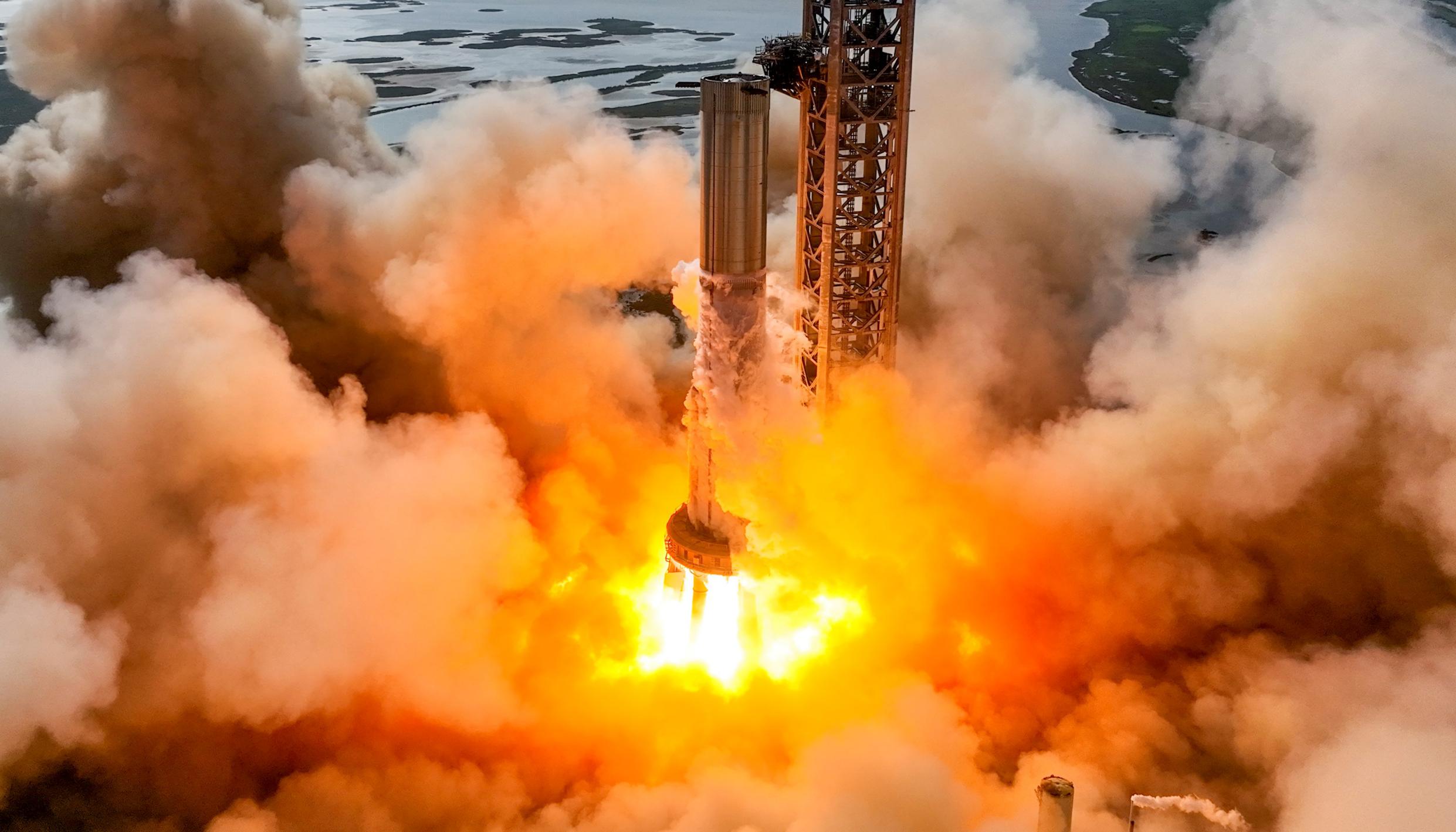
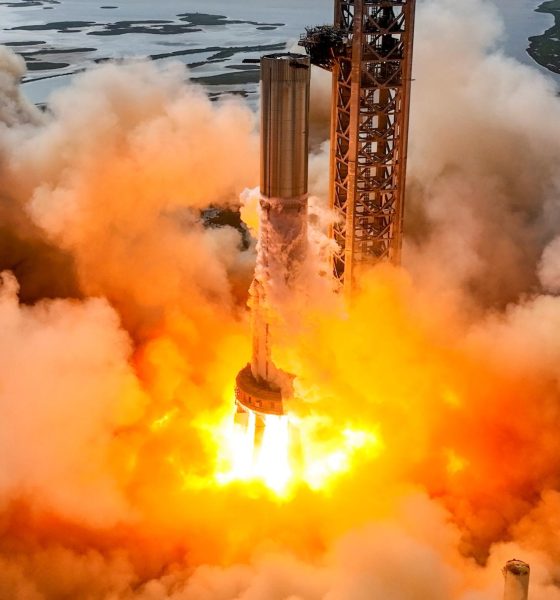
News
SpaceX returns Starship booster to factory after two major Raptor tests
For the sixth time this year, SpaceX has returned the same Super Heavy booster prototype to its South Texas Starship factory after completing several tests.
Why is unclear. Super Heavy Booster 7 left the factory for the first time in March 2022 and has been stuck in a seemingly continuous state of testing, rework, and retesting ever since. While the pace of testing and progress was in many ways more aggressive from 2019 to mid-2021, it still can’t be said that SpaceX has been slacking off in 2022. Booster 7 alone completed more than 24 distinct tests (including six static fires) between early April and late November.
But in a shift from the first three or so years of steel Starship development, SpaceX CEO Elon Musk has ceased to be a consistent source of information on the purpose and results of many of those tests, even as NASA has begun to funnel hundreds of millions of taxpayer dollars into the Starship program. Save for occasional tidbits from SpaceX, Musk, and NASA; or deep unofficial analyses of public information, the day-to-day or week-to-week status of Starship has generally been relegated to speculation. Over the last few months, that information void has only grown larger.
The update that's rolling out to the fleet makes full use of the front and rear steering travel to minimize turning circle. In this case a reduction of 1.6 feet just over the air— Wes (@wmorrill3) April 16, 2024
Perhaps the biggest near-term update this year came from a senior NASA official on October 31st. In an advisory briefing, Mark Kirasich – Deputy Associate Administrator for Artemis Campaign Development – offered a surprising amount of detail about SpaceX’s near-term plans and even reported that Starship’s first orbital test flight was expected as early as December 2022, pending several crucial tests. But more than five weeks later, SpaceX appears to have only made a modest amount of progress towards those milestones and has yet to attempt the two most important tests.
Kirasich: First orbital Starship/Super Heavy expected in December. Still waiting for full 33 engine test, wet dress rehearsel, and FAA licensing. Will land in ocean off Hawaii. pic.twitter.com/FktCggnPEe— Marcia Smith (@SpcPlcyOnline) October 31, 2022
Nonetheless, some progress – however indeterminate without official information – has been made. As of Kirasich’s briefing, SpaceX was in the middle of a relatively minor series of cautious propellant loading tests with Booster 7 and Ship 24, which were stacked on October 20th. After three more partial full-stack tests in the first seven days of November, Ship 24 was removed. Aside from the visible steps SpaceX took after, little is known about the outcome of those propellant loading tests.
Ship 24’s fate is a different story, but Super Heavy B7 appeared to make it through full-stack testing in great shape. On November 14th, Booster 7 completed a record-breaking 14-engine static fire, doubling its previous record of seven engines and likely becoming one of the most powerful rockets in history. Musk simply stated that the “test went well”.
Poor weather undoubtedly contributed, but it would be another 15 days before Booster 7’s next test. On November 29th, after an aborted test on the 28th, SpaceX followed Booster 7’s record-breaking 14-engine static fire with a longer 13-second test of 11 Raptors. Before engine ignition, SpaceX loaded Booster 7 with around 2800 tons (~6.2M lb) of liquid oxygen (LOx) propellant in less than 90 minutes, making it a partial wet dress rehearsal (the methane tank was barely filled) as well. Musk called it “a little more progress towards Mars” and SpaceX shared a photo of the static fire on Twitter, but the results of the test – meant “to test autogenous pressurization” – were kept mostly opaque.
That uncertainty didn’t help when two of Booster 7’s 33 Raptor engines were removed immediately after the long-duration test. Then, Booster 7 was removed from Starbase’s lone ‘orbital launch mount’ on December 2nd and rolled back to the factory’s High Bay assembly facility on December 3rd. Historically, SpaceX has only returned Booster 7 to the factory to repair damage or install missing hardware. Without official information, it’s impossible to say why Booster 7 returned for the sixth time.
The most optimistic explanation is that SpaceX brought the Super Heavy booster back to the factory to fully close out its engine section heat shield, which currently has 20 missing panels for each of its outer Raptor engines. But there’s a good reason that those panels were never reinstalled. Any replacements would need to be modified to ensure that the ad-hoc system installed to prevent the conditions that led to Booster 7’s first explosion from recurring can still be used for future static fire tests. Even then, it’s unclear why SpaceX would need to reinstall those panels now for Booster 7’s upcoming 33-engine static fire(s) and full-stack wet dress rehearsal(s) when they weren’t needed for 11 and 14-engine static fires and a dozen other fire-free tests.
Depending on why Booster 7 is back at the factory, there is a precedent for it returning to the launch site as early as next week. Alternatively, if major work or repairs are required, it could be six weeks before SpaceX returns the rocket to the launch pad. Given that the full wet dress rehearsals and one or several 33-engine static fires standing between Booster 7 and flight readiness will be riskier and more challenging than any other test the prototype has completed to date, there is no real chance that Starship will be ready for its first orbital launch this year.
In fact, without detailed information, especially regarding Ship 24’s mysterious state, it’s difficult to pinpoint a viable target for Starship’s orbital launch debut more specific than the first half of 2023. But with any luck, even if it requires a substantially longer wait, SpaceX’s recent decision to make Starbase move slower and break fewer things will hopefully pay off with a successful debut sometime next year.

News
Tesla is making a change to its exterior cameras with a potential upgrade
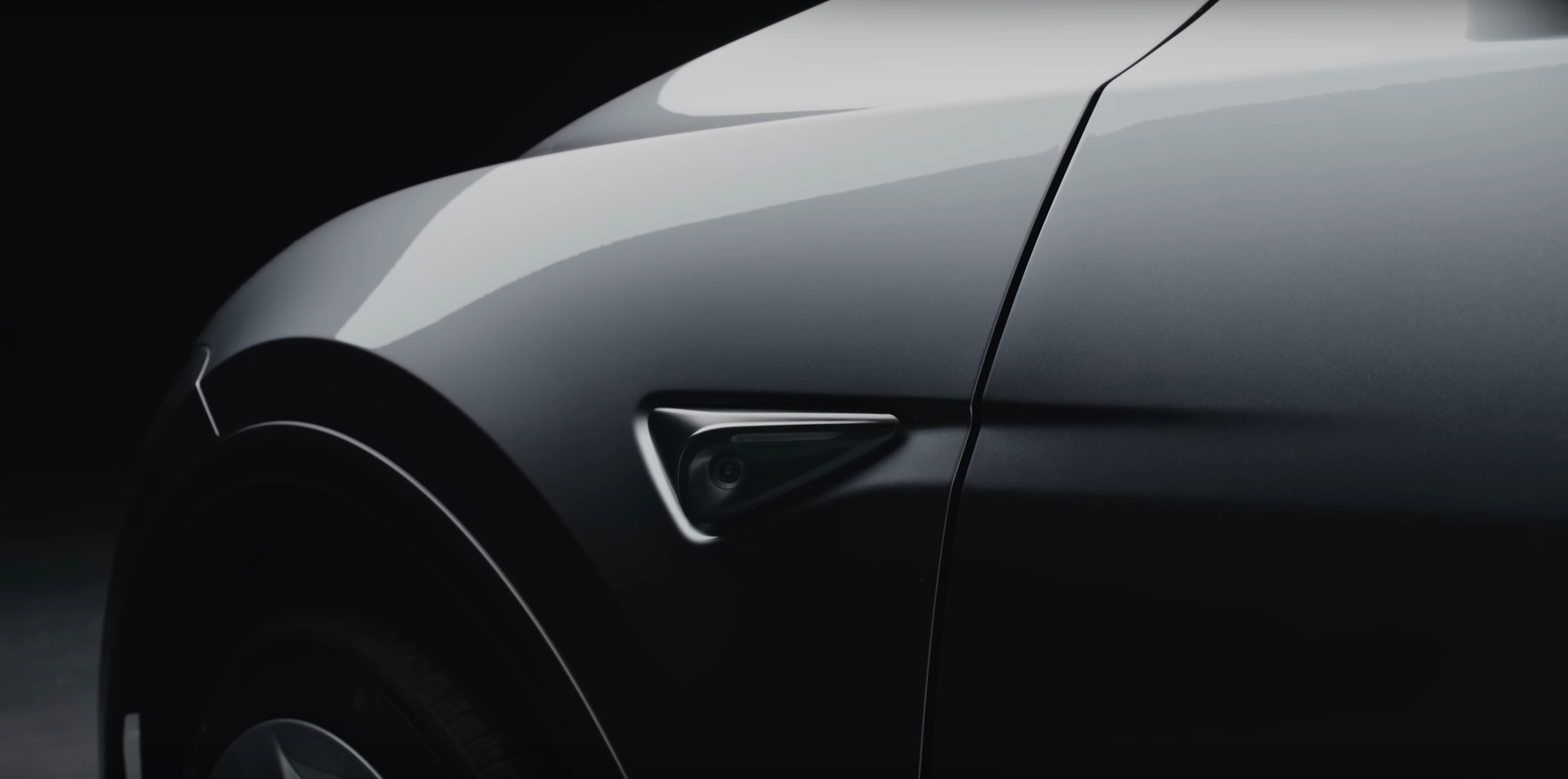
Tesla appears to be making a change to its exterior side repeater cameras, which are used for the company’s Full Self-Driving suite, and other features, like Sentry Mode.
The change appears to be a potential upgrade in preparation for the AI5 suite, which CEO Elon Musk said will be present on a handful of vehicles next year, but will not be widely implemented until 2027.
Currently, Tesla uses a Sony sensor lens with the model number IMX963, a 5-megapixel camera with better dynamic range and low-light performance over the past iteration in Hardware 3 vehicles. Cameras in HW3 cars were only 1.2 megapixels.
However, Tesla is looking to upgrade, it appears, as Tesla hacker greentheonly has spotted a new sensor model in its firmware code, with the model number IMX00N being explicitly mentioned:
Looks like Tesla is changing (upgrading?) cameras in (some?) new cars produced.
Where as HW4 to date used exterior cameras with IMX963, now they (might potentially) have something called IMX00N— green (@greentheonly) December 1, 2025
Sony has not announced any formal specifications for the IMX00N model, and although IMX963 has been used in AI4/HW4 vehicles, it only makes sense that Tesla would prepare to upgrade these external cameras once again in preparation for what it believes to be the second hardware iteration capable of fully autonomous self-driving.
Tesla has maintained that AI4/HW4 vehicles are capable of self-driving operation, but AI5 will likely help the company make significant strides, especially in terms of overall performance and data collection.
Tesla last updated its exterior cameras on its vehicles back in early 2023, as it transitioned to the 5-megapixel IMX963. It also added additional cameras to its vehicles in January with the new Model Y, which featured an additional lens on the front bumper to help with Full Self-Driving.
Tesla’s new self-driving computer (HW4): more cameras, radar, and more
News
Tesla Model Y Standard Full Review: Is it worth the lower price?
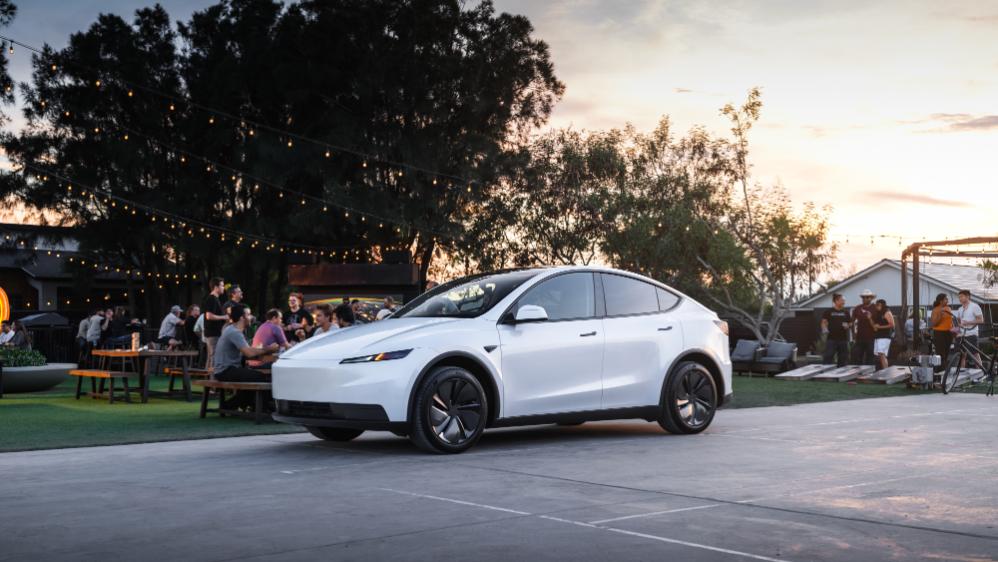
Tesla launched the Model Y Standard as an attempt to offer affordable electric vehicles to consumers now that the $7,500 EV tax credit is gone. We were able to spend four days with the car, and it was more than enough time to determine whether or not the car was worth the $9,000 discount compared to the Premium All-Wheel-Drive configuration, which is what I drive daily.
The Model Y Standard was stripped of some of the features that are present in the Premium trims of the Model Y: no glass roof, a sound system with roughly half the speakers, fewer acoustic-lined glass windows, less storage, and less functionality from an interior standpoint.
However, there are some real advantages to purchasing a Standard Model Y, and there are a handful of situations where this car would be well-suited.
Do I think it is worth the lower price? Well, I’ll get to that later in this article.
Initial Thoughts
In my first impressions review of the Model Y Standard, I talked about the face-value differences between my Model Y Premium and the new, more affordable trim. You will first notice the lack of storage between the front two seats, as the cupholder and additional storage bin sliding doors are void. You still get the cupholders, but they are exposed, which isn’t a huge deal, but it definitely takes away from the sleek look the Premium trim offers.
Additionally, the textile seats replace those of the vegan leather that is available in the upper-level trims. I mentioned previously that I could take or leave the vegan leather for the textile seats, as they are easy to clean, quick drying, and hide oils from your skin much better than leather does.
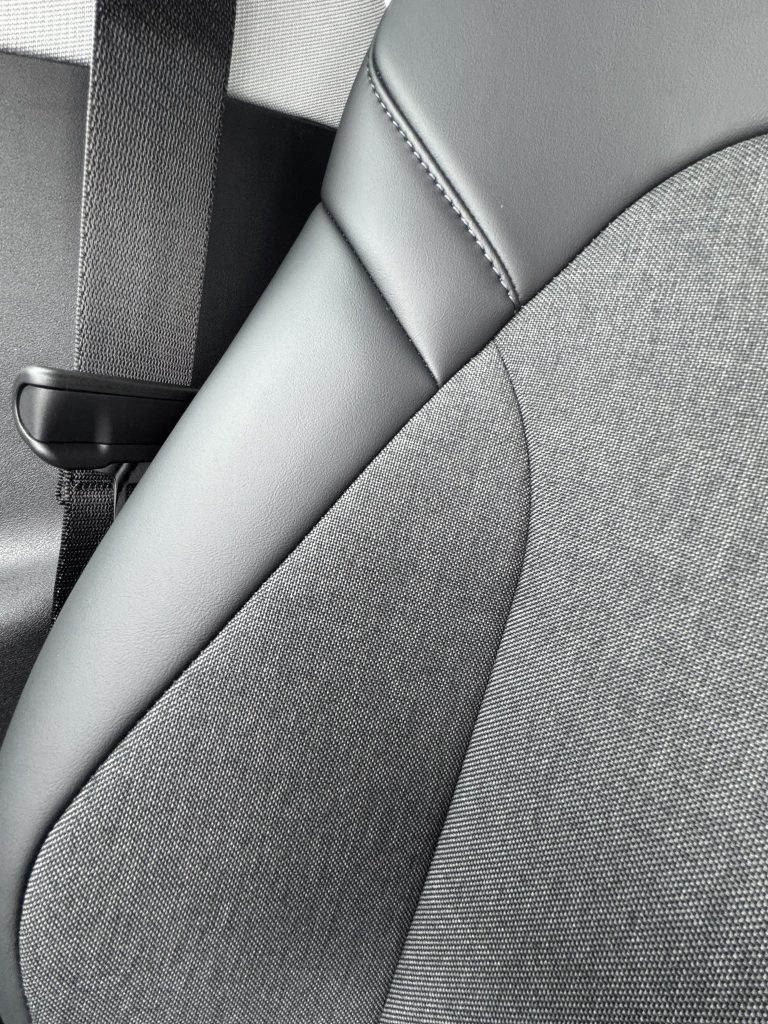
However, there comes one big sacrifice that I have been spoiled by, as the textile seats are not ventilated, so say goodbye to cooling your keister in the Summertime.
The lack of a glass roof is something many owners might not even notice. However, I have been spoiled by the glass roof in my car, and I look out of it every time I’m in my car. It is one of my favorite features, without a doubt. While it would not be a dealbreaker for me, it would be something I would miss terribly.
Things I Noticed After Several Days
Cabin Noise
One of the biggest things I noticed after the first two days in the Model Y Standard is that the cabin is much louder than the Premium. This is because Tesla did not acoustically line all of the glass in the Standard configuration, as it did in the Premium. The side windows are not treated, just the windshields. Therefore, you notice the noise level in the cabin is louder than in the Premium.
If you had not been driving in a Premium trim for a few months, you might not notice it. However, it is something that is a big sacrifice when moving to a different trim level, especially one that is less premium than what you might currently drive.
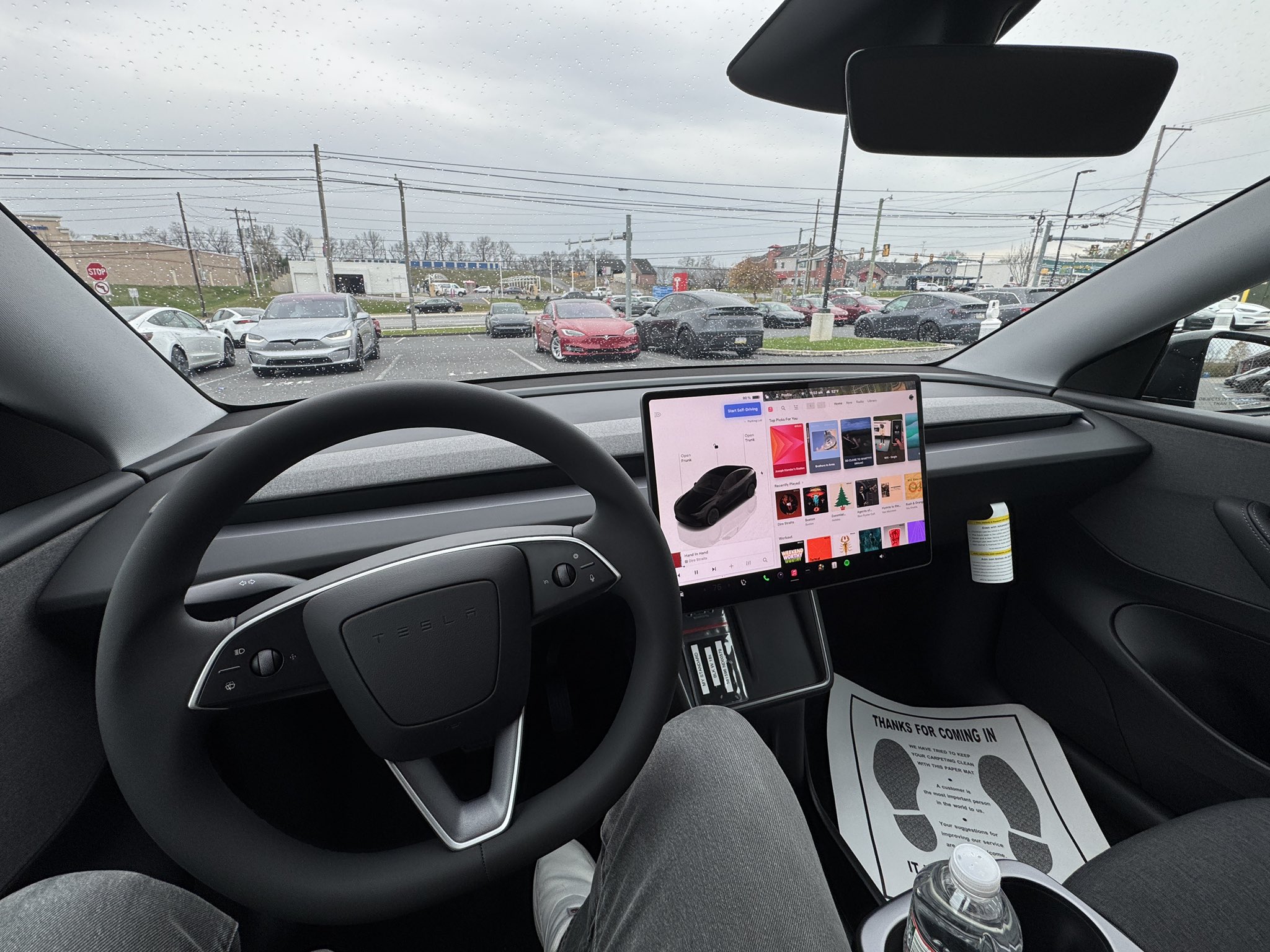
I have always been so shocked at how amazingly quiet the Premium trim’s cabin is; my Model Y is extremely peaceful, even when I’m sitting in bumper-to-bumper traffic, and people have modified mufflers and exhaust systems, tractor-trailers are going by, or crotchrockets are zipping by on the interstate.
This is a huge difference between the two cars, and it is something that is really hard to get used to. I know, first-world problems, right? But when you’re paying between $39,990 and $48,990 for a car, those little things truly do matter.
Stereo System Differences
Another thing I was very aware of was how weak the sound system is. I think if I had bought a Standard Model Y, I would have looked at having the speakers and subwoofers upgraded; I was almost disappointed in how much of a change it was between the two cars.
When I finally picked up my Model Y Premium on Friday (which had been detailed by the awesome team at Tesla Mechanicsburg), the first thing I did was crank up the volume and listen to some music. I really missed having a premium sound system.
Ride Quality
There are virtually no differences between the two cars in terms of ride quality. They are both extremely fun to drive, and the suspension in the Model Y Standard feels perhaps a little bit stiffer than the Premium. Regardless, I didn’t truly notice all that much of a change.
Driving this car around windy roads and tight turns was just as fun as my Model Y Premium. It was a blast to test out, and the slight change in feel was welcome. It’s always fun to drive new cars.
Performance
This is the first EV I’ve ever ridden in where I did not feel that awesome sensation of instant torque. It’s still a quick car, but it is missing that pep in its step that many of us have become accustomed to.
If you want to get someone’s true reaction to EV acceleration, let me just put it this way: This is not the car to do it in.
Some Little-Known Facts About the Model Y Standard
Most of us know that the Model Y Standard has a glass roof, but it is opaque, so even if you took out the headliner, you still would not see out of it. However, there is an interesting little tidbit from a Service perspective that does not make much sense.
If the Model Y glass roof cracks or is broken and needs to be replaced, Service is required to pull off the entire headliner and topside interior to access the glass. It cannot be replaced from the outside. In the Premium, because the glass is exposed, it is a much simpler process to replace the glass. This was an interesting thing I learned.
Additionally, the seat controls are only available on the center screen, which makes it difficult to adjust the seat if you are larger than the person who sat in the car previously. In order to adjust the seat, you’ll have to lean over the chair, access the controls from the screen, and adjust it manually before getting in.
Is the Tesla Model Y Standard Worth the Cheaper Price?
For an additional $9,000 to buy the Model Y Premium AWD, you would get a more capable powertrain, a quieter cabin, better performance, an upgraded interior, more storage, a better sound system, and more luxury features.
To me, the Standard is a car that seems extremely ideal for a teenager’s first vehicle (I got a $1,500 1998 VW Jetta K2 with 200,000 miles when I was 16), or a fleet vehicle. This would be the perfect car for salespeople to use: it does not have all the bells and whistles, it is efficient, and it is just what is needed to drive around to meetings.
For a personal car, it really depends on what you think you need. Admittedly, I’ve been spoiled by the Premium configuration, and personally, I wouldn’t go down to the Standard after owning a Premium trim.
News
Tesla’s new Holiday perk is timed perfectly to make FSD a household name
Tesla AI4 owners get FSD (Supervised) through Christmas, New Year’s Eve and well into the post-holiday travel season.

Tesla quietly rolled out a free Full Self-Driving (Supervised) trial for roughly 1.5 million HW4 owners in North America who never bought the package, and the timing could very well be genius.
As it turns out, the trial doesn’t end after 30 days. Instead, it expires January 8, 2026, meaning owners get FSD (Supervised) through Christmas, New Year’s Eve and well into the post-holiday travel season. This extended window positions the feature for maximum word-of-mouth exposure.
A clever holiday gift
Tesla watcher Sawyer Merritt first spotted the detail after multiple owners shared screenshots showing the trial expiring on January 8. He confirmed with affected users that none had active FSD subscriptions before the rollout. He also observed that Tesla never called the promotion a “30-day trial,” as the in-car message simply reads “You’re Getting FSD (Supervised) For the Holidays,” which technically runs until after the new year.
The roughly 40-day period covers peak family travel and gatherings, giving owners ample opportunity to showcase the latest FSD V14’s capabilities on highway trips, crowded parking lots and neighborhood drives. With relatives riding along, hands-off highway driving and automatic lane changes could become instant conversation starters.
Rave reviews for FSD V14 highlight demo potential
FSD has been receiving positive reviews from users as of late. Following the release of FSD v14.2.1, numerous owners praised the update for its smoothness and reliability. Tesla owner @LactoseLunatic called it a “huge leap forward from version 14.1.4,” praising extreme smoothness, snappy lane changes and assertive yet safe behavior that allows relaxed monitoring.
Another Tesla owner, @DevinOlsenn, drove 600 km without disengagements, noting his wife now defaults to FSD for daily use due to its refined feel. Sawyer Merritt also tested FSD V14.2.1 in snow on unplowed New Hampshire roads, and the system stayed extra cautious without hesitation. Longtime FSD tester Chuck Cook highlighted improved sign recognition in school zones, showing better dynamic awareness. These reports of fewer interventions and a more “sentient” drive could turn family passengers into advocates, fueling subscriptions come January.









